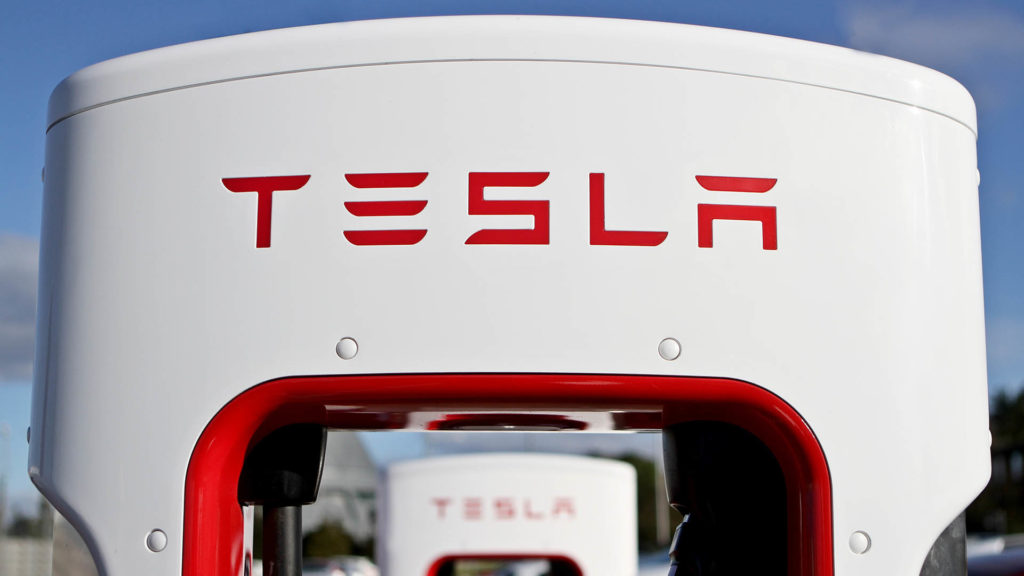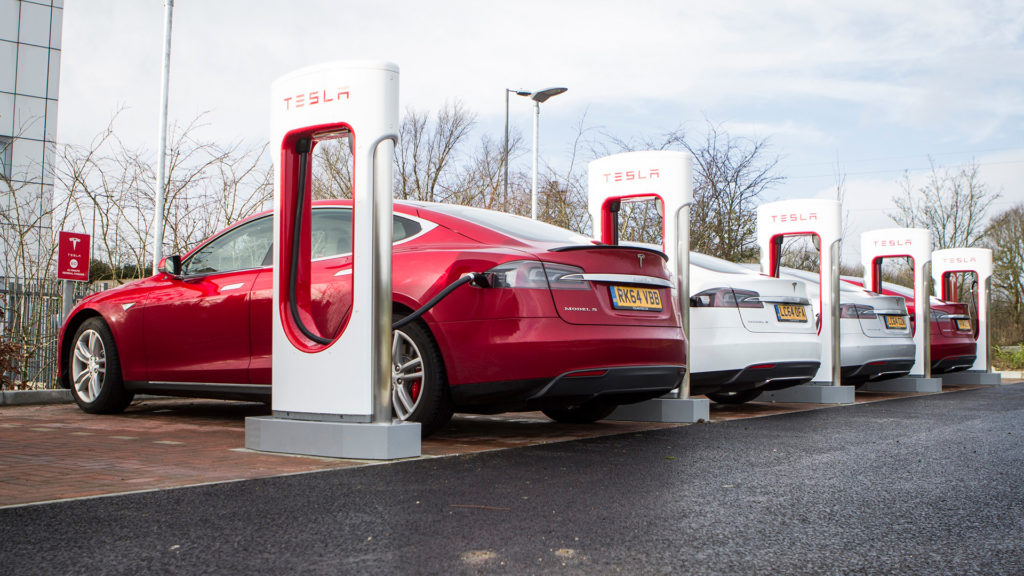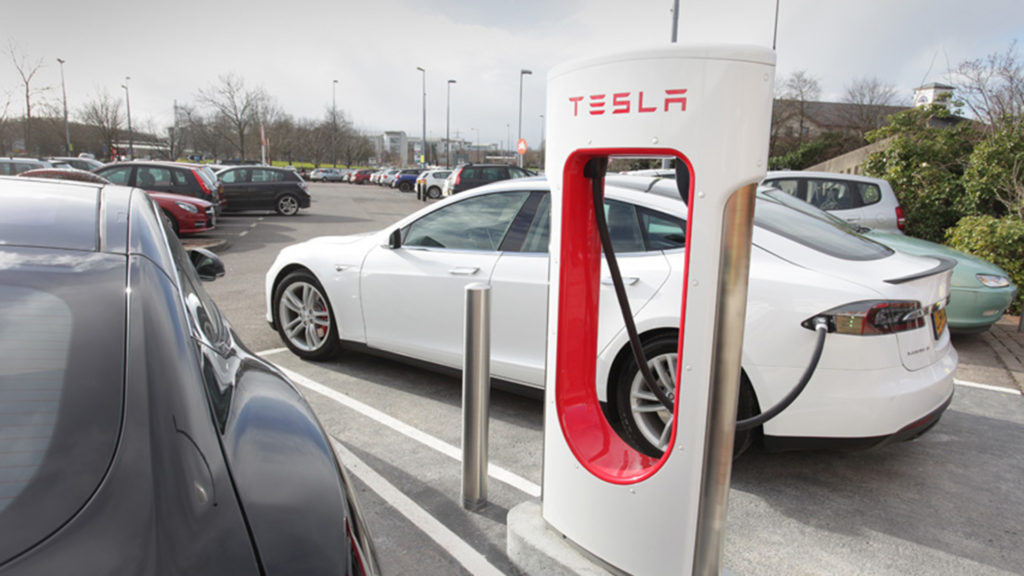For years, drivers of non-Tesla electric cars were forced to look at Tesla Superchargers with envious eyes. The first Supercharger station opened back in 2012 and the network has since grown to more than 50,000 Superchargers worldwide.
Things changed in November 2021, when Tesla launched a pilot scheme for non-Tesla electric vehicles to use its previously private network. The pilot programme was limited to 10 sites in the Netherlands, with Tesla saying that ‘access to an extensive, convenient and reliable fast-charging network is critical for large-scale EV adoption’.
Building on the success of the pilot programme, Tesla has extended the scheme to other European countries, including the UK, where non-Tesla electric car owners were granted access to 15 Supercharger locations.
Where is non-Tesla Supercharging available?
At the time of writing, non-Tesla Supercharging is available in the following countries:
- Europe: Austria, Belgium, Denmark, Finland, France, Germany, Hungary, Iceland, Ireland, Italy, Luxembourg, Netherlands, Norway, Romania, Spain, Sweden, Switzerland, Turkey, United Kingdom
- North America: United States, Canada
- Asia Pacific: Australia, New Zealand, Mainland China, South Korea

Where is non-Tesla Supercharging available in the UK?
There are currently 35 non-Tesla Supercharger stations in the UK, six of which are in Scotland and five in Wales, with the rest in England. You can view the list of locations at the bottom of the page, but for the latest information, you’re advised to visit the Zapmap website. Simply use the ‘Tesla Public Supercharger’ filter.
UK electric car owners also have access to the Supercharger network across Europe.
What is the Tesla Supercharger network?
There are three types of Tesla Superchargers in the UK: V2 (speeds of up to 150kW), V3 (up to 250kW) and the latest V4 (up to 350kW). Each charging unit will use one of two cables: Type 2 (Tesla Model S and Model X) or CCS (Combined Charging System – Tesla Model 3 and Model Y, plus compatible non-Tesla electric cars).
It’s the largest EV charging network in the country, so having access to Tesla’s Superchargers is a real bonus for electric car owners. The majority of charging points are located on or close to major roads, although others can be found in hotels or venues where people spend a longer period of time. These are known as Destination chargers.

Can all non-Tesla electric cars use Superchargers?
Non-Tesla Supercharging is only accessible for CCS-enabled electric cars. EVs with other connectors cannot use Tesla’s chargers.
Some Supercharger stations have shorter cables designed for Tesla vehicles, which might be a stretch for non-Tesla electric cars. Tesla advises: ‘Please do not obstruct other cars by parking over the lines if the cable cannot comfortably reach your car’.
How do drivers of non-Tesla EVs use a Supercharger?
The Tesla smartphone app is required to create a Tesla account. Once you have downloaded it, select ‘Charge Your Non-Tesla’ and find the nearest Supercharger site. Add a payment method, connect the car to the charging point and select ‘Start Charging’. Select ‘Stop Charging’ to complete the session.

How much does it cost to use a Tesla Supercharger?
Prices vary by site and are available in the Tesla app. Lower prices are available by signing up for Supercharging membership, which costs £10.99 a year. Discounts range from 10p to 20p per kWh.
Non-members can access the Tesla Supercharger network, but can expect to pay around 60p per kWh. It’s also worth noting that Tesla charges idle fees when a fully charged electric car remains connected to Supercharger. These fees only apply when a Supercharger station is at 50 per cent capacity or more, but the idle fee of 50p per minute doubles to £1 per minute when the station is 100 percent occupied.
List of non-Tesla Supercharger sites in the UK
Information is correct at the time of writing in February 2024.
England
- Adderstone
- Banbury
- Birmingham (St Andrews)
- Bromley
- Cambridge (Trumpington Park & Ride)
- Dorking
- Guildford
- Grays
- Eurotunnel
- Harrogate
- Heathrow Terminal 2 & 3
- Lifton, Devon
- Luton
- Manchester (Trafford)
- Merry Hill
- Newmarket (Studlands Shopping Park)
- Reading
- Romford
- Sidcup
- Thetford (Elveden Inn)
- Tottenham
- Trentham
- Uxbridge
- Wokingham
Scotland
- Aviemore
- Dundee (The Landmark Hotel and Leisure Club)
- Eurocentral, Lanarkshire
- Fort William
- Heartlands, West Lothian
- Inverness
Wales
- Aberystwyth
- Cardiff
- Carmarthen
- Celtic Manor Resort
- Flint Mountain
ALSO READ:
What is Plug & Charge for electric cars?
From slow to ultra-rapid: electric car charging speeds explained

